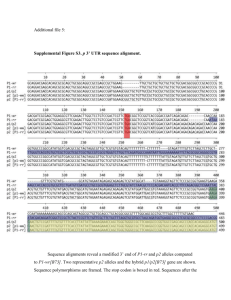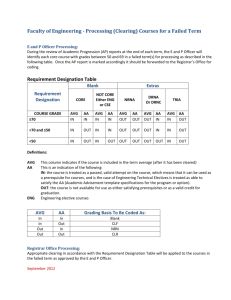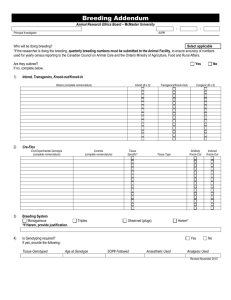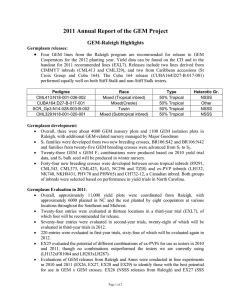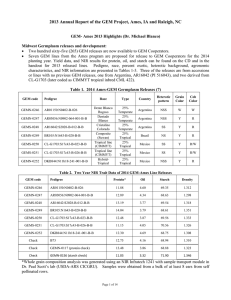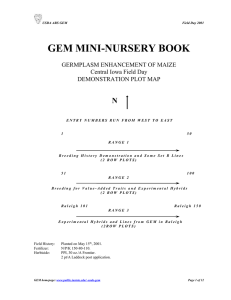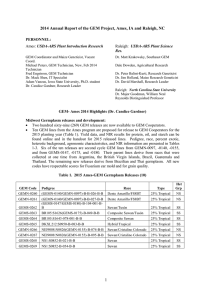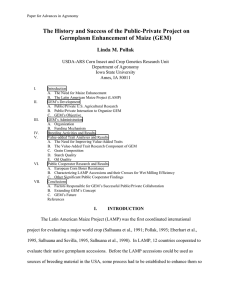ANNUAL REPORT
advertisement
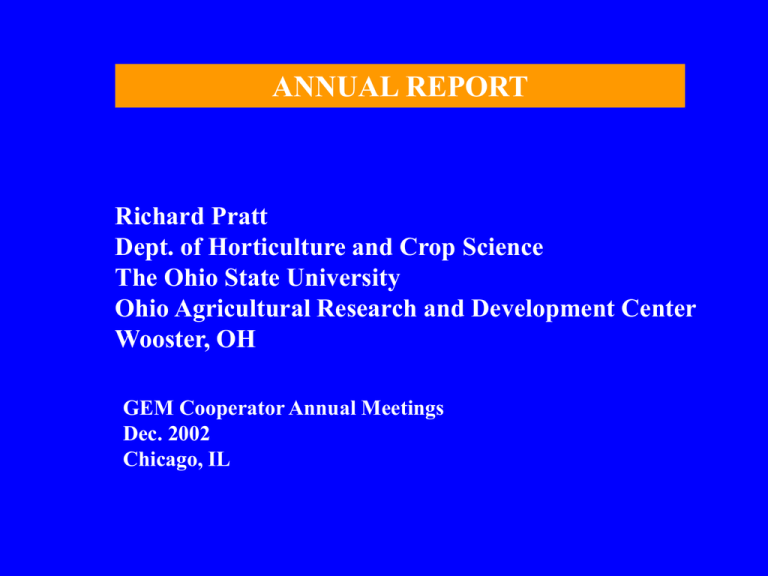
ANNUAL REPORT Richard Pratt Dept. of Horticulture and Crop Science The Ohio State University Ohio Agricultural Research and Development Center Wooster, OH GEM Cooperator Annual Meetings Dec. 2002 Chicago, IL Release of GEMS-002 Maize Germplasm Line Breeding Test Cross Data Summary Inbred Characterization Recommendations Breeding followed GEM protocol Breeding line OSU 43-2 derived from GEM population FS8(A)S:S09 (FS8(A) 50% BSSS related, 21% tropical, 18% southeastern U.S., and 11% diverse Corn Belt (with a high proportion of inbred C103A Produced S1s (441) Visual Selection, self 2 per line in IA and OH Select lines in IA and OH > S2 winter nursery testcross to nSS tester LH185 In 1999: 11 one-replicate tests at 10 locations in IA, IL, IN, and OH In 2001: 9 one-replicate tests at 7 locations in IA, IL, and OH (Mo17 and Oh43 related testers) Testcross Data Summary Demonstrated good combining ability with three non-BSSS testers Average yield of the testcrosses across 17 locations during two seasons was approx. 95% of the mean of commercial check hybrids Yields equivalent or higher than checks at sites that experienced drought stress, and below in the high-yield tests of 2001 Moisture content consistently below the average of the check entries (avg. 1.5%) and stalk lodging was approximately equal (avg. 7%) GEMS-002 Inbred Characterization Plant Height Avg. 133 cm << B73 Ear Height Avg. 56 cm << B73 Ear Length Avg. 13.2 cm (11 to 15) Ear Width Avg. 3.8 cm ( 3.5 to 4.4) Cob Color White ____________ ____________________ _______ Maturity Approx. 7 days << B73 Kernel Traits of GEMS-0002 100 Wt. Color Avg. 12.5 (10-16) Yellow to Yellow-Orange Density Avg. 1.35 g/cc Protein 2.5 pts. >>B73 Oil Essentially equal B73 Recommendations GEMS-002 is intended as an early Stiff-Stalk related breeding resource for the improvement and diversification of elite, non-‘Lancaster Sure-Crop’ related inbreds. The line is unique in that it has a relatively high proportion of tropical germplasm yet is able to impart earliness to hybrids. It has potential as a source of germplasm in breeding programs throughout much of the U.S. Corn Belt. Suggest introduction into breeding programs by crossing with elite inbreds followed by modified pedigree selection. Only one cycle of selection has been practiced – there is a need to check disease and insect resistance. Acknowledgments: -- Cooperators Linda Pollak and Kevin Montgomery -- In kind support from other GEM cooperators -- Technical staff USDA/ARS GEM S.C.A. and OARDC provided funding support.
